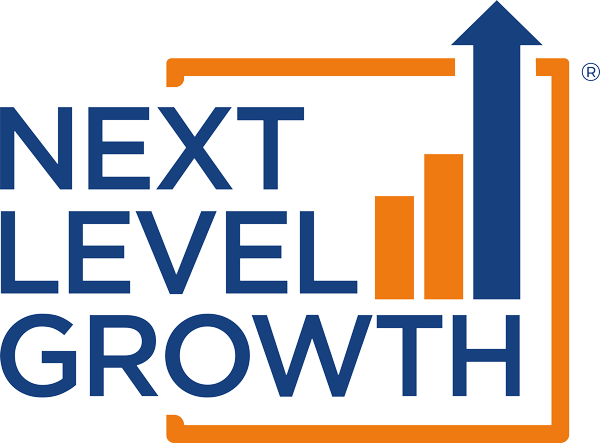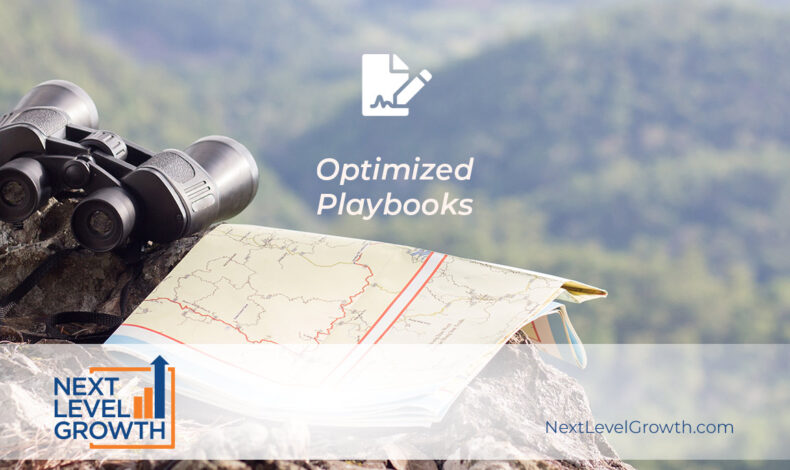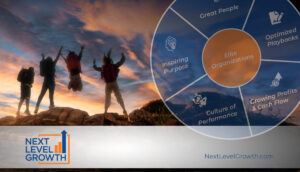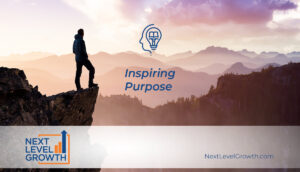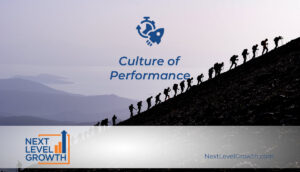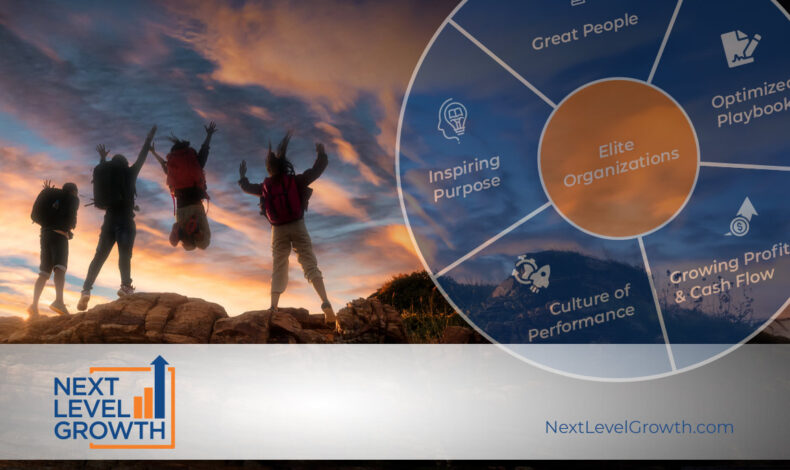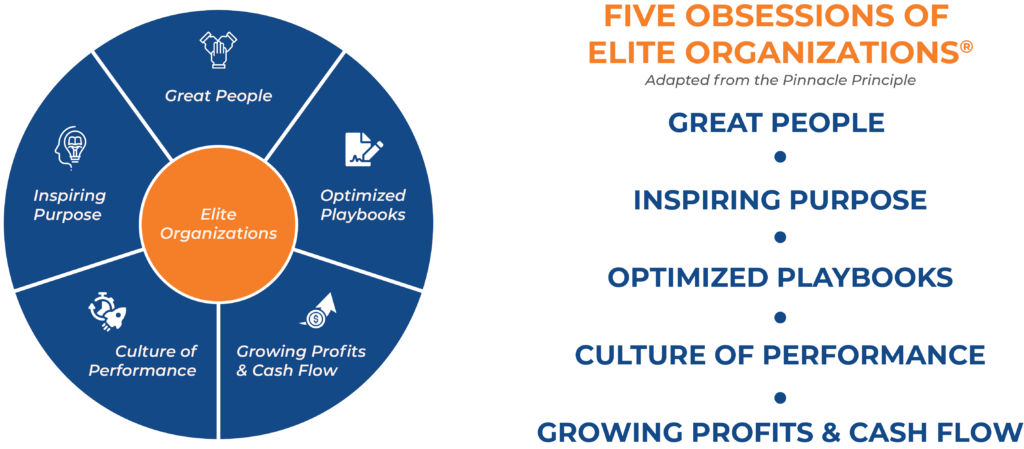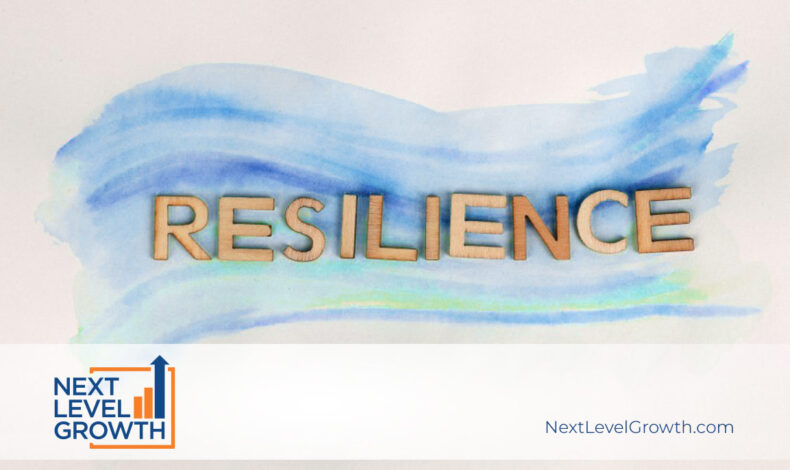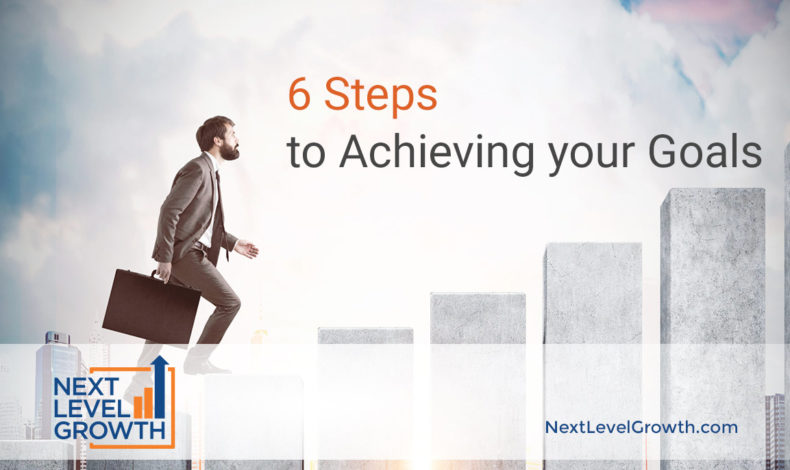“Every system is perfectly designed to get the results it gets.” W. Edwards Deming
Where are you frustrated within your organization?
Are you frustrated by people? Then your systems, or processes, for recruiting, hiring, onboarding, developing, and removing people are designed, or at least being executed, in a way that frustrates you.
Are you frustrated by a lack of growth? Then your systems and processes to attract target market leads, convert them into customers or clients, keep them happy, and retain them is designed, or at least being executed, in a way that frustrates you.
Are you frustrated by a lack of profit and/or cash flow? Then your systems and processes to optimize profit and net cash flow are designed, or at least being executed, in a way that underperforms expectations and frustrates you.
The Root Cause of Almost All Your Business Issues
Since leaving my career as an owner and CEO of manufacturing businesses in the hardwood industry and transitioning into my work as Founder of Next Level Growth and Business Guide, it has become very clear to me that the root cause of almost all issues in business is either one of people or process, and if you don’t have optimized Process Playbooks for people to train on and follow, you cannot always be certain that people are your problem.
Imagine a scenario where you took the best professional NFL football players by position, assembled them as a team, and put them up against a team randomly assembled of NFL players who were all backups for their positions. All things being equal, the All-Star team would likely win almost every time. If, however, the All-Star team did not have playbooks, was not allowed to practice running plays, and did not receive any coaching, while the team of backups was given well thought out playbooks, studied them regularly, practiced running the plays on a regular basis, and received consistent coaching, I would put my money on the backups to beat the All-Stars every time.
There is incredible power in using Optimized Playbooks, which is the third of the Five Obsessions of elite Organizations®.
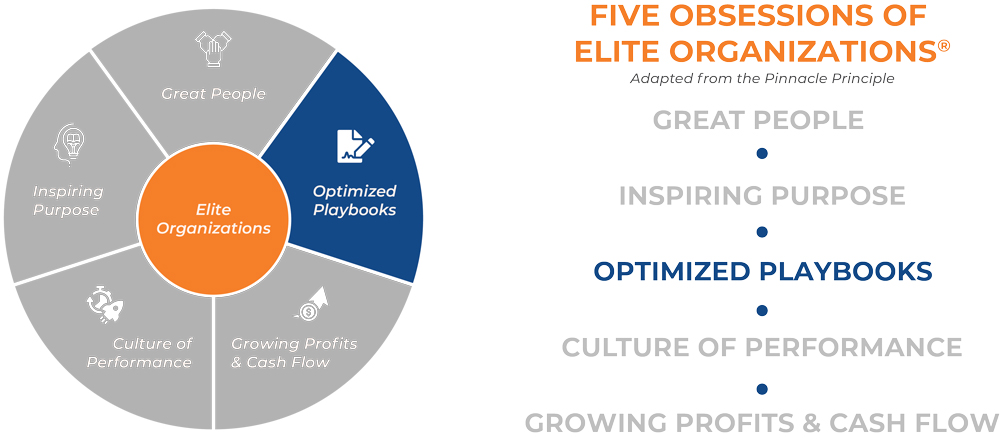
Onboarding or Waterboarding?
Why is it that outside of the business world, every professional has some version of a Playbook? Sports teams draw up and practice set plays. Actors have scripts. Musicians have compositions and set lists. Each of them spends countless hours studying and practicing their plays, scripts, or compositions so that they can perform at their absolute best.
Only in the business world, do we, as professionals, avoid creating defined, documented, and optimized Process Playbooks. We expect people to come into our organizations and perform, but we don’t onboard them through a great process and train them on optimized playbooks for their role. Instead of being well onboarded into an organization and a job, most employees get waterboarded. We may expect excellence in our outcomes, but our systems are often designed for mediocrity, at best. As a result, employees suffer, their teams suffer, their leaders suffer, the company suffers, and in the end, the customer suffers.
The short video below is a great representation of how most new employees feel as the result of a bad onboarding experience…
Process Playbooks versus Procedures
The third obsession of elite organizations is Optimized Playbooks. When we talk about Playbooks, we are not talking about hundreds, or thousands, of pages of highly detailed documentation. Those are what we call Work Instructions, or SOP manuals. Documents like those can be helpful in onboarding and training new employees who are deductive learners, or to satisfy some regulatory requirement, but documents like those are rarely, if ever, referenced once they are produced.
Process Playbooks are essentially checklists, or a sequential outline of the high-level steps, in order, to go from a triggering event, like receiving a purchase agreement, to delivering a product or service and collecting a payment, a desired outcome. At the very front end of most businesses, there are Process Playbooks for the Marketing or Business Development Team…they define how the organization attracts target market prospects. Then comes a Sales Playbook to map out and define how to convert those prospects into customers or clients. Following the Sales Playbook comes the Operations Playbooks, everything about how to make the products or deliver the services once there is an order to fill or a new client to onboard. The outcomes of the Operations Playbooks typically serve as the inputs to the Finance or Accounting and Admin Playbooks, everything about how money moves and reporting flows through the organization.
Overarching all of that, it is important to have an Employee Journey Playbook that covers everything from the time a need to fill a seat is recognized, through recruiting, hiring, onboarding, development, and eventually offboarding.
Do It Yourself
When thinking about Playbooks as high-level checklists, think about the Pareto Principle, also known as the 20/80 Rule, that 20 percent of your inputs get you 80 percent of your results, so document the 20 percent that gets you the 80 percent. Where more detail would be helpful, we suggest creating a video library to supplement the Process Playbook. So many people are used to learning from content like YouTube videos, consider creating screen share videos for detailed instructions on how to do things within your CRM, ERP, or HRIS systems as part of the training for employees.
You can even use simple cell phone videos to show employees how to complete steps of your Process Playbooks that will provide them the greater detail. Some of our manufacturing clients use cell phone videos to show the details of how to set up a machine, and other technical aspects of production. We have hospitality clients who use simple videos to provide the training details on how to greet a guest and how to address and work with an unhappy guest. If a picture is worth a thousand words, a video is worth many, many more.
A simple approach to begin documenting your processes and building out your playbooks is to think about what action triggers certain things to happen in your organization. Then, before you start documenting what you currently do, get clear on what the optimal outcome of the process should be. As a side note, this exercise is best done with a small group of high performers from each team rather than by one individual. The group approach both brings a diversity of ideas and also creates greater buy-in through participation.
Start with the trigger and work with the team to determine what the very first step should be and document that. From there, talk through what the next step should be, and look for areas where things break down, issues arise, or there are frustrations. Try to come up with a better, or more consistent way to handle that step to eliminate the problems, then go to the next step and repeat. At the end of this, you should have a clear process that, when followed, gives you a very high likelihood of consistently achieving the optimal outcome you desire.
Once your processes are documented and organized, you need to distribute them to everyone and work through them with every employee so that, for their role, regardless of tenure, all employees are clear on the processes they are expected to follow. This also allows you to clarify what you need them to do when they encounter nuances, or situations, that are non-standard and require deviation from the process. How much room do they have to figure out a solution on their own? How much input do they need to get from management?
That last part is summarized beautifully in a quote from Isadore Sharp, Founder of the Four Seasons, who said, “You systemize the predictable so you can humanize the exceptional.” The more we can systemize the predictable things that happen within our organizations, the more we free people to use their creative minds to humanize everything else and create exceptional experiences both inside and outside the organization.
Faster and Better Path to Done
In my experience, it takes most organizations who go down the do-it-yourself path of documenting their Process Playbooks anywhere from nine months to nine years to get the work done. The problem is that they often overcomplicate it, or ironically, they get too busy in the day-to-day firefighting that would be significantly reduced if they had their Process Playbooks in place. As my friend and co-author of The Path to the Pinnacle, Greg Cleary likes to say, “Process takes pressure off of people.”
At Next Level Growth, we often introduce and refer our clients to our friends at Process Optimizer, a team of certified Lean experts with specific training in working with organizations to build Process Playbooks. When our clients bring in the experts from Process Optimizer, they get their Process Documents done and delivered in just nine days, start to finish, and they also get a full year of follow up coaching to help ensure they get their Playbooks fully optimized and embedded in all of their training systems. Follow this link for more information on working with Process Optimizer.
Remember, almost all of your issues can be traced back to either a people issue, or a process issue, and without Optimized Playbooks, you may have people with the potential to be great actually being penalized, or exited, because you failed to give them a key resource to be successful. Once you have your systems designed and aligned to create excellent outcomes, with effective training (practice) and coaching in place, only then can you truly create an accountable Culture of Performance, the fourth obsession of elite organizations, which I will explore in the next article in this series on the Five Obsessions of Elite Organizations®.
Click to read the next article in this series, a Culture of Performance.
Download a full sample of a great Employee Journey Process Playbook
And receive a $500 coupon towards a workshop with our friends at Process Optimizer, courtesy of Next Level Growth.Next Steps
- If you have missed any of the articles in the series, click below to catch up:
- Start a conversation with us today to learn about our unique approach to taking your business, and your life, to the Next Level.
